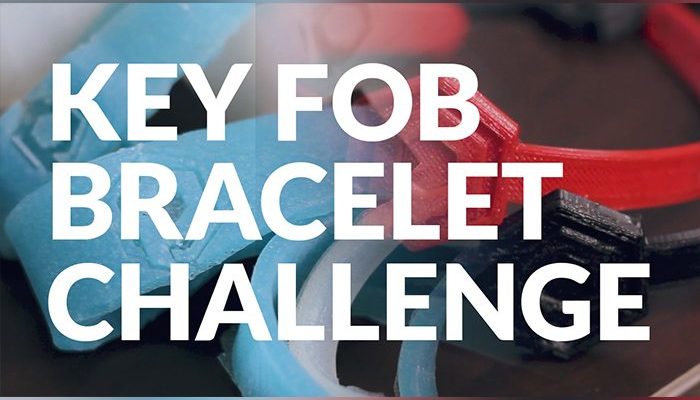PROJECT 1: KEY FOB BRACELETS
Education
For Ashna and Drasti’s first project during their Summer internship, we tasked them with redesigning a product or tool that would benefit our workplace here at the Proto3000 office. We came up with the idea of reinventing the key fobs that we usually have attached to our lanyards into a type of wearable technology. To do this, they took the RFID chip inside our key fobs and implemented them into a 3D printed or molded wristband that had be removable, durable, and aesthetically pleasing.
Over the course of a couple weeks Ashna and Drasti each designed their own take on the wristband. After multiple revisions and reiterations, their projects are finally ready for final production and our team couldn’t be more excited. Watch the video below to see how it all went down!
Describe what you made, its function/purpose.
Ashna: I made a key fob, its function is to make it easier to get in and out of the office building. Sometimes the staff had a hard time looking for their lanyard while carrying a lot of things. With the bracelet on their wrist, it’s easier to tap the sensor and harder to misplace.
Drasti: The fob wristband I designed is for one purpose: to make everyday tasks at the office more convenient. In the mornings when the staff are carrying bags and objects, it becomes an extreme inconvenience to find the key fob in pockets and purses. Instead, my design allows our team to simply slip on the wristband that allows easy access to the office in a more hands-free approach.
Why did you design it the way you did?
Ashna: My bracelet is made of Ninja Flex and has the Proto3000 logo as the watch face accompanied by a simple band that can be worn on a daily basis. The band has adjustable holes, making it easy for anyone to wear it. At the back, there is a section for the PLA chip housing. The chip is inserted into this housing by pausing the printer halfway through the print. The PLA housing keeps the chip safe and can be glued to the back of the bracelet.
Drasti: I designed my bracelet without a lock system because it would be easier and quicker to put on and take off. I used silicon which is extremely soft and comfortable to wear and designed it for convenience and comfortability.
What challenges did you face, and how did you overcome them?
Ashna: The challenges I faced were getting a length for the band that would fit everyone and integrating the chip. For the length made it longer with more holes and a free loop so the strap would be secured. For the chip, I couldn’t put it in the logo because pausing Ninja Flex doesn’t work and bending the bracelet may damage the RFID chip and making a slit might cause it to fall out.
Drasti: I faced a huge challenge with the size of the wristband. At the office everyone has different wrist sizes, some colleagues have extremely small wrists when some other people have larger wrists. In my first few stages of designing, I decided to make the bracelet an average size, which is 7.6 inches in circumference. But, this size did not fit for some people. In the end, I came up with three sizes, a small, medium, and a large, this way the wristband fits everyone perfectly.
What would you do differently if you were to redo the product development cycle?
Ashna: Something I would do differently would be to start with a flat band instead of a curved because it won’t sit the same on everyone’s arm and that would have saved time.
Drasti: If I had the chance of redoing the entire process, I would have started off with having 3 different sizes from the very beginning. Having 3 different models would have saved so much time in the designing process.
What did you learn from this project (in regards to design, engineering, manufacturing etc.)?
Ashna: I learned that there is a lot of trial and error to achieve a final design, and prototyping is important because it might look right in the software but may not necessarily work in real life. Printing out the model helped because it was important to test it out to see if everything works smoothly.
Drasti: Through this project, I learned that prototyping and researching are the most important aspect of your design process because these skills will drastically shape your final product. It’s also important to have various different prototypes since the models act as a visual and a tangible model which allows you to clearly view pros of the model while clearly showing the area of improvements in your design.
